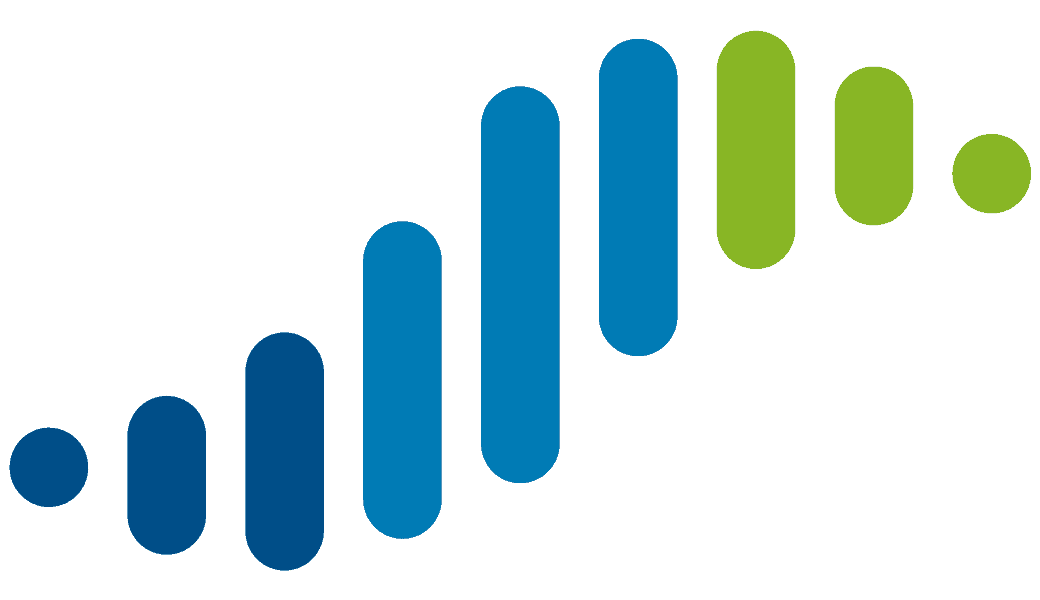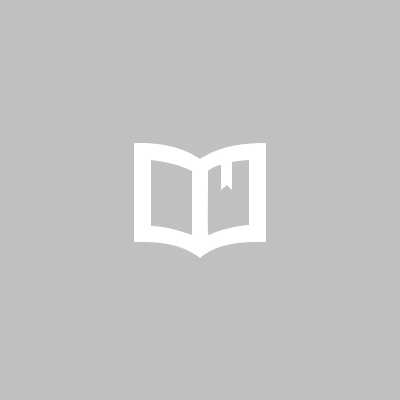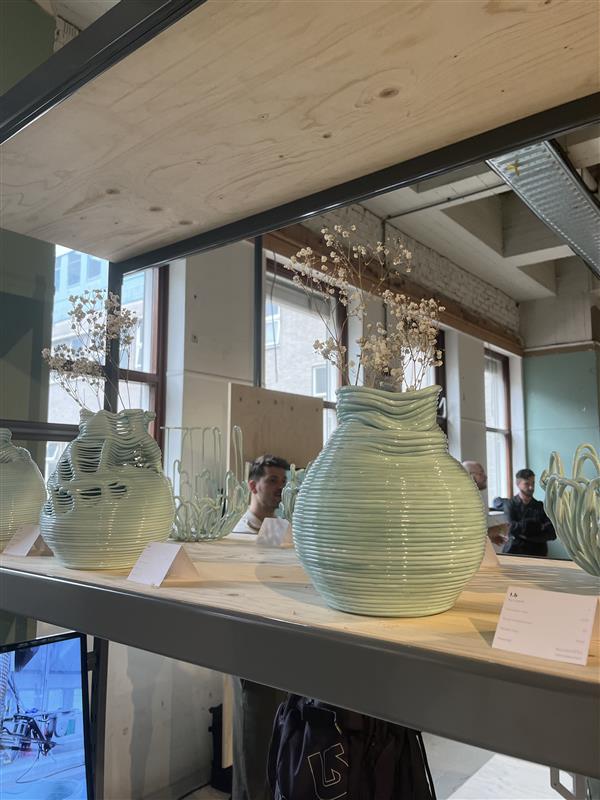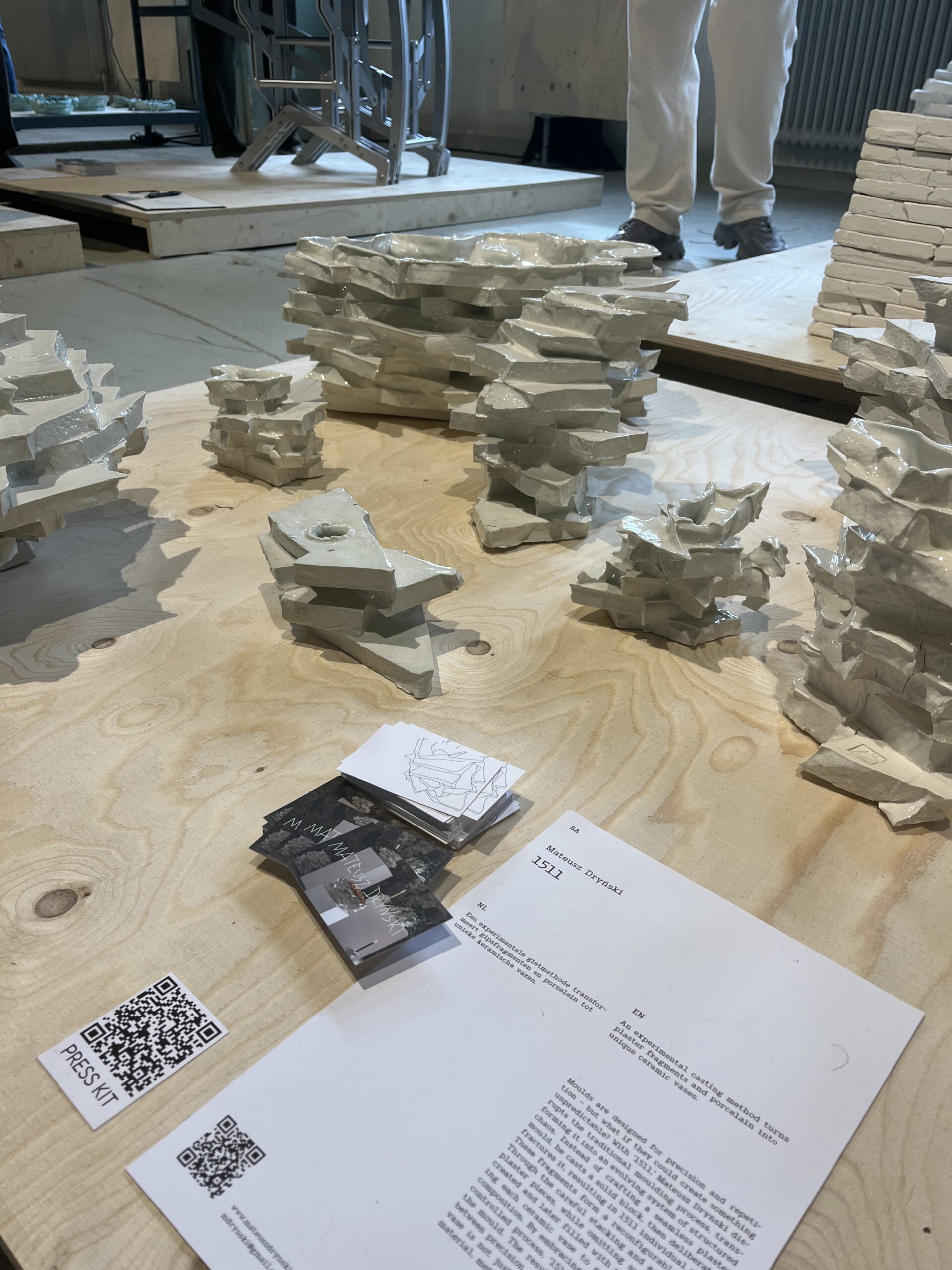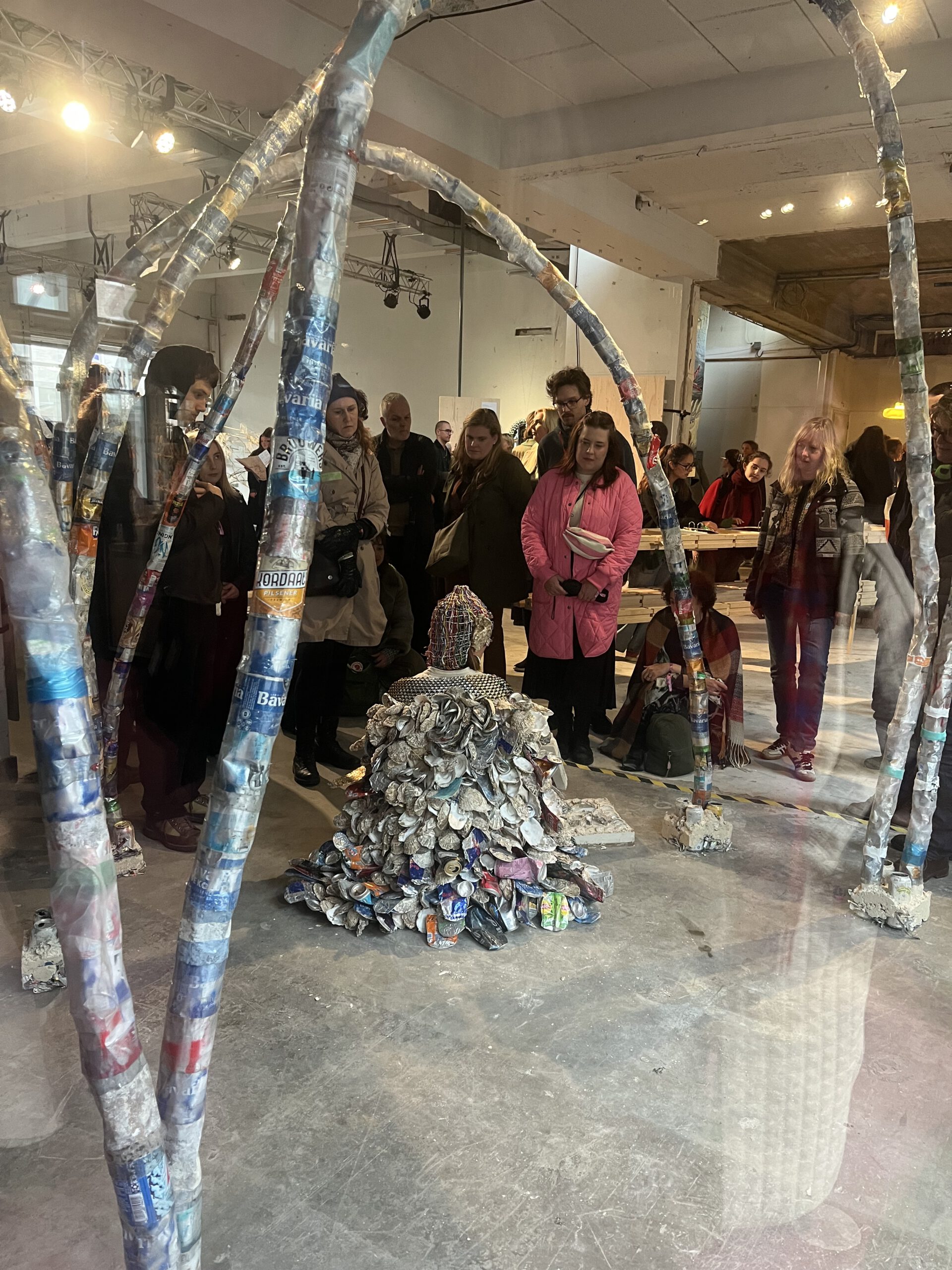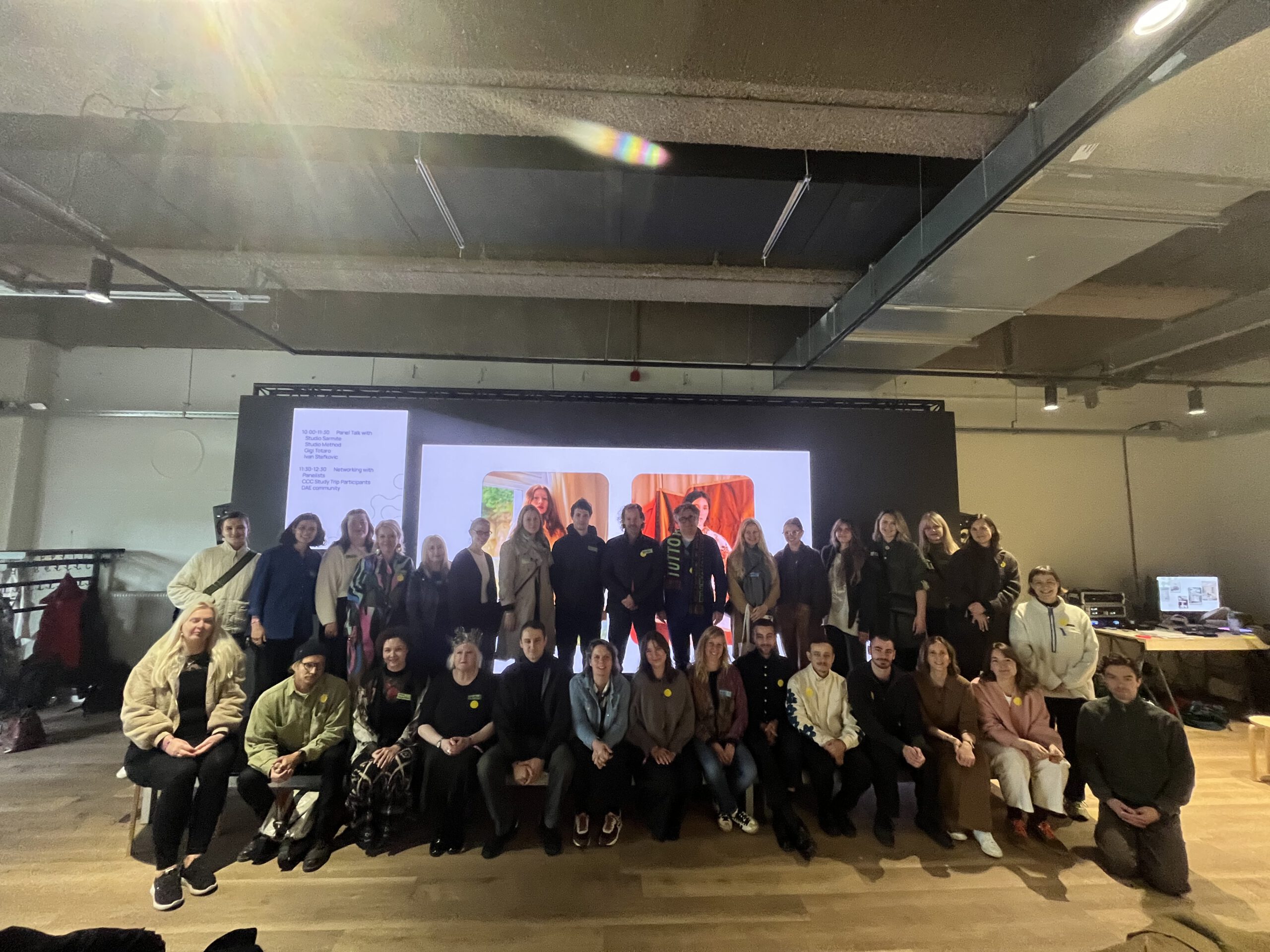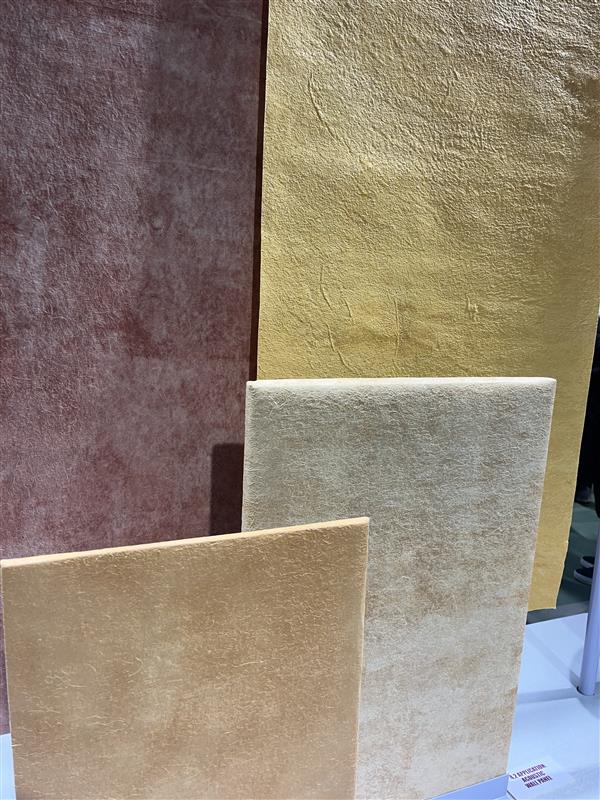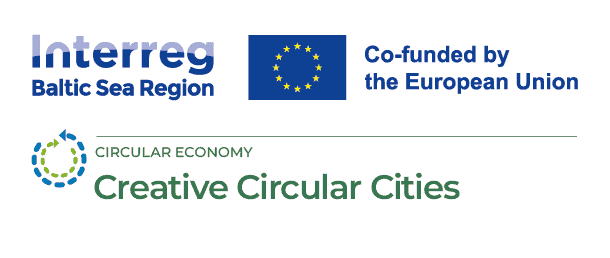
Creativity as key to circularity: Reflections from the CCC study trip to the Dutch Design week
07 November 2025
As part of a study trip organised by the Tallinn Business Incubator foundation, 17 creatives from the Baltic Sea region — including architects, animators and industrial designers — and CCC project partners travelled to Eindhoven to experience the magic of the Dutch Design week. The three-day trip aimed to connect, inspire and inform participants on the latest trends of circular design and sustainable materials.
Under the motto past present possible, the 25th edition of the Dutch Design week went way beyond showcasing “beautiful things” and invited engagement with wider societal problems, including environmental degradation, government censorship and threats to democracy through the lens of creativity and design. Objects displayed at the exhibitions were explored beyond what was visible to the naked eye — they became vessels for 21st century challenges, telling stories through compelling visual representations.
A tour of the graduate show highlighted the desire of young people to use their creative and conceptual thinking to make a mark on the world: Vibrating sandboxes represented illegal mining activity in the Amazon rainforest, while choreographed radio-antenna movements signified the reach of state surveillance across countries. Students of the Eindhoven Design Academy are well aware of the state of the world they are living in and are using their knowledge and creativity to bring attention to pressing issues around the world.
Regarding the central topic of the CCC study trip — circularity and circular design — the Dutch Design week had plenty to offer. Circularity, climate change and sustainability were a central focus of participating designers who drew on unique and innovative solutions: Graduate Ivan Stefkovic turned compressed soil into interior design objects while Sarmite Polakova, from Studio Sarmite, utilized pine bark (a waste-product of the timber industry) to create an alternative to leather. The talks, objects and exhibitions dedicated to circular design confidently positioned designers, artists and other creative minds as central in the pursuit of circularity. Whether it’s out-of-the-box thinking or the use of innovative materials and processes, the Dutch Design week made a strong case for creativity-led circularity.
Reflecting on their time at the Dutch Design week, creatives from the Baltic Sea region shared specific exhibitions, items and materials they found inspiring and relevant to their work. Relating these impressions to their own context, study trip participants pointed out the persisting lack of collaboration across different industries, limited understanding of circular design and difficulty in accessing resources. The participants emphasized that systemic changes in the Baltic Sea region are necessary to create a more circularity-friendly business, policy and strategy landscape.
Overall, the Dutch Design week demonstrated that circular economy is not simply a process for minimizing waste from various practices and industries. It is a collaborative, resourceful and carefully considered ecosystem that benefits significantly from creative actors and inputs. The trip highlighted the importance of new perspectives on creativity and circularity — a conclusion we hope deeply resonates with participants as they return to their respective Creative Circular Cities in the Baltic Sea Region.


